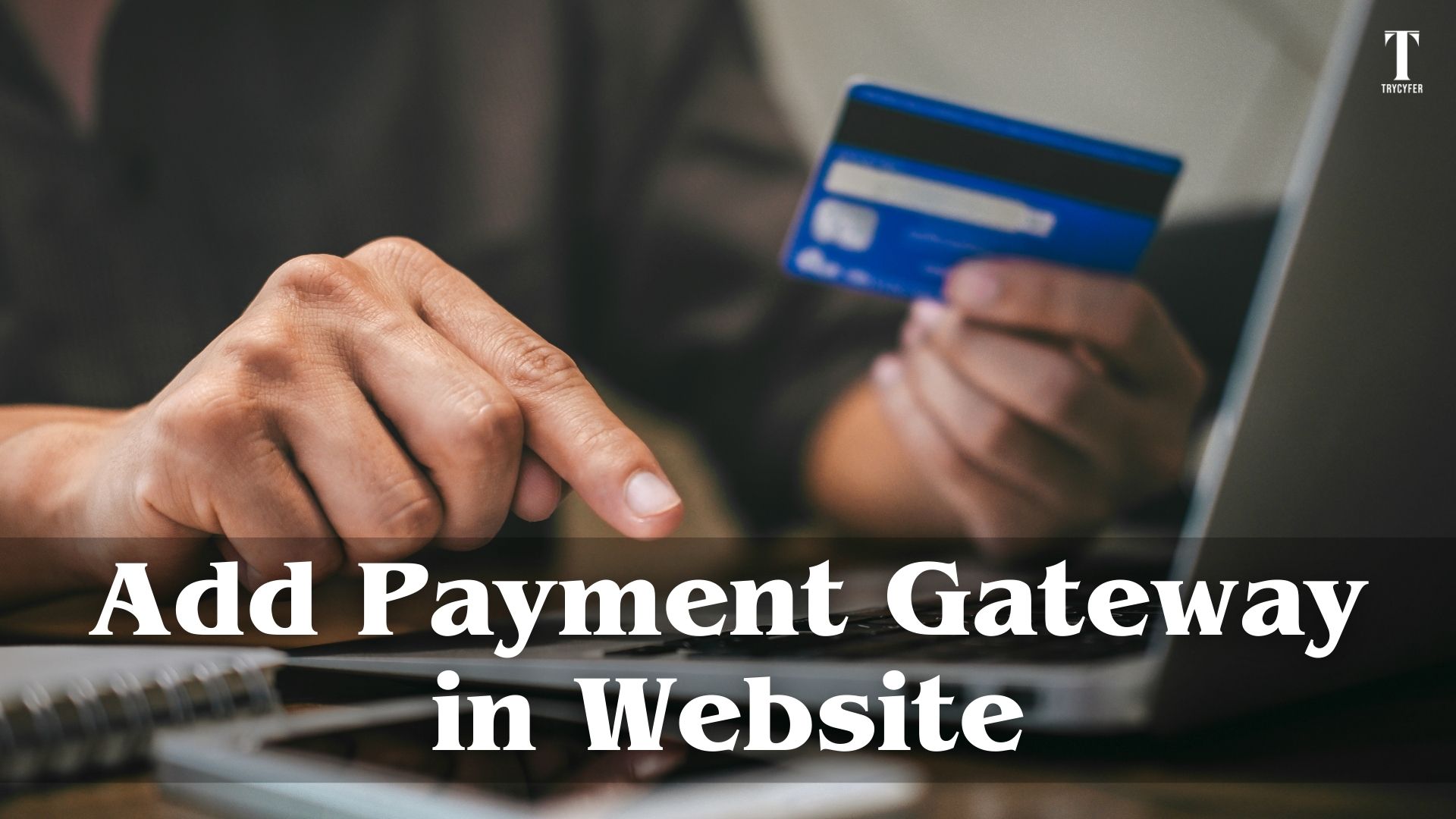How to Add Payment Gateway in Website?

Integrating a payment gateway to your website is crucial for conducting online transactions, whether running an e-commerce store, a subscription-based service, or any other business requiring digital payments. A payment gateway ensures secure, efficient, and reliable payment processing, giving customers a seamless checkout experience. This blog will explore the various steps to integrate a payment gateway into your website.
1. Payment Gateway
A payment gateway is a technology that facilitates online payments by transferring payment data between the customer, the merchant, and the bank. It encrypts confidential information, such as credit card details, ensuring secure transactions. Key functions include:
- Authorization: Approves or declines transactions.
- Processing: Facilitates the actual transaction by transferring funds from the customer’s account to the merchant’s.
- Settlement: Finalizes the transaction, ensuring funds are appropriately allocated.
2. Choose the Right Payment Gateway
Selecting the right payment gateway depends on several factors, including your business needs, the types of payments you want to accept, and your target market. Some popular payment gateways include:
- PayPal: Widely used, easy to integrate, supports multiple currencies.
- Stripe: Developer-friendly, customizable, supports recurring billing.
- Square: Suitable for both online and in-person payments, easy setup.
- Authorize.Net: Reliable, offers extensive features and security.
- Razorpay: Popular in India, supports multiple payment methods.
3. Set Up a Merchant Account

A merchant account is a type of bank account that permits businesses to accept online payments. You should set up a merchant account depending on your payment gateway. Some gateways, like PayPal, offer an all-in-one solution with a merchant account, while others require a separate setup.
4. Gather Required Information
Before integrating a payment gateway, gather the necessary information and documentation:
- Business Details: Legal business name, address, tax identification number.
- Bank Account Information: Account number routing number for settlements.
- Website Information: URL, privacy policy, terms of service.
- Compliance Documents: PCI DSS compliance, if required.
5. Integrate the Payment Gateway
The integration process varies depending on your website platform and the chosen payment gateway. Here are general steps for different scenarios:
For E-Commerce Platforms
If you’re using an e-commerce platform like Shopify, WooCommerce, or BigCommerce, the integration process is usually straightforward
- Log in to Your Platform: Access your website’s admin panel.
- Navigate to Payment Settings: Find the payment settings section.
- Select Payment Gateway: Choose the payment gateway you want to integrate.
- Follow Integration Instructions: Enter API keys and configure settings. For WooCommerce development, ensure you follow the platform’s guidelines.
For Custom Websites
You’ll need to use the payment gateway’s API to integrate custom-built websites. Here’s a general outline:
- Sign Up for a Developer Account: Register with the payment gateway to get access to API documentation and credentials.
- Obtain API Keys: These keys authenticate your website with the payment gateway.
- Read API Documentation: Understand how to use the API to handle transactions.
- Write Code for Integration: Use programming languages like PHP, JavaScript, or Python to integrate the payment gateway. This involves:
- Creating Payment Forms: Secure forms to collect payment details.
- Implementing API Calls: Handle transactions, such as authorizing and capturing payments.
- Handling Responses: Process responses from the payment gateway, such as success or error messages.
- Test the Integration: Use sandbox environments provided by the gateway to test transactions.
6. Ensure Security and Compliance
Security is paramount when handling online payments. Follow these best practices:
- SSL Certificate: Ensure that your website uses HTTPS to encrypt data.
- PCI DSS Compliance: Stick to Payment Card Industry Data Security Standards to protect cardholder data.
- Tokenization: Replace sensitive payment information with a unique identifier (token) to enhance security.
- Regular Security Audits: Conduct regular audits to identify and fix vulnerabilities.
7. Test Your Payment Gateway
Before going live, thoroughly test the payment gateway integration:
- Test Transactions: Perform test transactions to ensure everything works correctly.
- Check Error Handling: Verify that errors are handled gracefully and inform users appropriately.
- Validate Security Measures: Ensure all security measures, such as SSL encryption and PCI compliance, are in place.
8. Go Live
Once testing is complete and you’re confident in the integration, switch from the test environment to the live environment:
- Update API Keys: Replace sandbox API keys with live keys.
- Notify Your Customers: Inform customers that online payments are now available.
9. Monitor and Optimize
After launching your payment gateway, continuously monitor its performance:
- Transaction Reports: Regularly review transaction reports to identify any issues.
- Customer Feedback: Gather customer feedback to improve the payment process.
- Update and Maintain: Keep the payment gateway integration modernized with the latest security patches and features.
Conclusion
A payment gateway to your website is essential for facilitating secure and efficient online transactions. By carefully choosing the right payment gateway, setting up necessary accounts, integrating the gateway, ensuring security and compliance, and continuously monitoring performance, you can offer a smooth payment experience for your customers. Whether you’re using an e-commerce platform or a custom-built website, following these steps will help you successfully add a payment gateway and grow your business.











